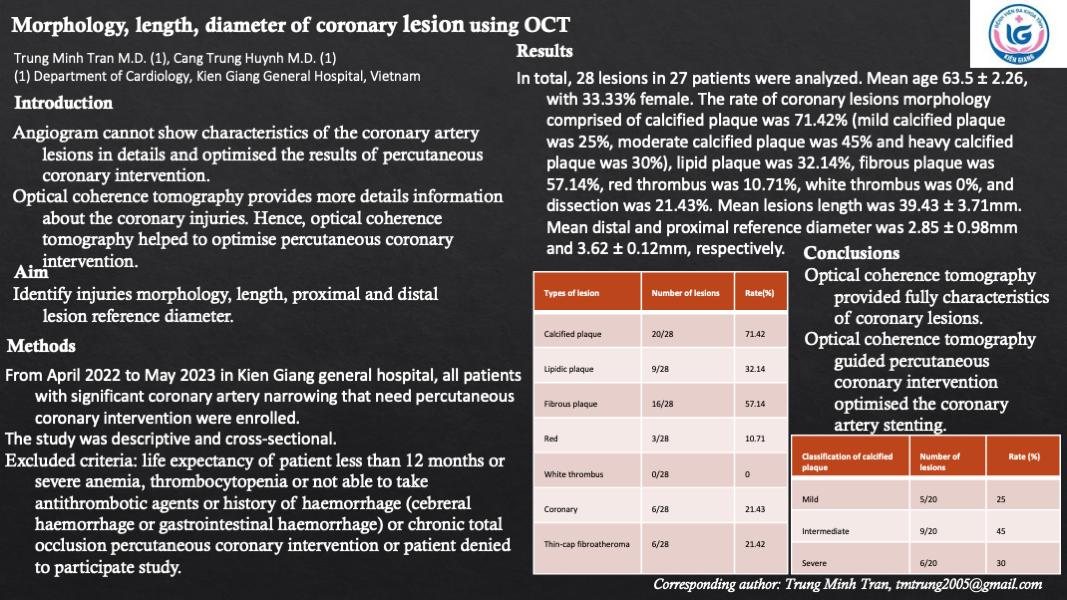AIMS:
The aim of this study is to identify injuries morphology, length, proximal and distal lesion reference diameter by OCT.
METHODS AND RESULTS:
From April 2022 to May 2023 in Kien Giang general hospital, all patients with significant coronary artery narrowing that need PCI were enrolled. The study was descriptive. In total, 28 lesions in 27 patients were analyzed. Mean age 63.5 ± 2.26, with 33.33% female. The rate of coronary lesions morphology comprised of calcified plaque was 71.42% (mild calcified plaque was 25%, moderate calcified plaque was 45% and heavy calcified plaque was 30%), lipid plaque was 32.14%, fibrous plaque was 57.14%, red thrombus was 10.71%, white thrombus was 0%, and dissection was 21.43%. Mean lesions length was 39.43 ± 3.71mm. Mean distal and proximal reference diameter was 2.85 ± 0.98mm and 3.62 ± 0.12mm, respectively.
CONCLUSION:
PCI using OCT to help to identify coronary artery lesion morphology, lesion length and lesion reference diameter. OCT also helped to find a precise PCI strategy such as stent selection, balloon selection and other supporting equipments.
